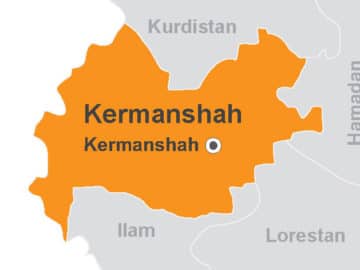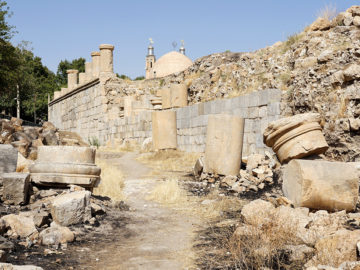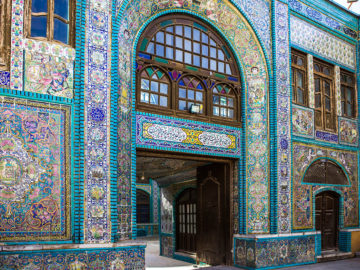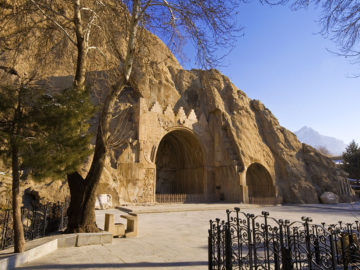The city of Kermanshah is the center of a province with the same name, and one of the most important cities of the west part of Iran. The history of Kermanshah dates back to the fourth century A.D. and from that time to the Arab’s invasion it was considered as the second capital of Sassanid. It is located on the cross section of North-South and East-West roads, and on the path to Iraq that is used by pilgrims. People in Kermanshah speak Kurdish with different dialects including Kermanshahi, Sanjabi, Zanganeh, and Sourani. They also speak Farsi with Kermanshahi accent.
The name of the city changed a lot mostly when the governments were replaced. The oldest known name of the place goes back to the Kasi Empire when the city was called Elipi. Later, in Achaemenid time, it came to be known as Kambadan, Jarmisin, Karmishin, and Karmishan. For a short time after the entrance of Islam to the country, the name Kermanshah is changed to Qarmasin, but it was mostly called Kermanshah.
The city is in the middle of Zagros Mountain. The mountainous area and the many natural caves made it a suitable place for the human of Stone Age. The oldest objects found in the excavations of this region include some axe handles that are more than 200 thousand years old. It has always been a popular dwelling place for human. In Parthian era, it had two states of Kadina and Kambadneh, and in Sassanid time it became one of the most important cities of the country. Khosrow II ordered the construction of many buildings and chose Kermanshah as his Spring Capital.
Arabs destroyed the city in their attack, but it rose from its ashes and became one of the four important cities of Iran. It was ruined yet again in Mongol attack, and later when the descendant of Mongols came to Iran. With the establishment of Safavid Dynasty, like the rest of the country, Kermanshah was reconstructed and developed as well. However, it was damaged in the Ottoman-Safavid battles until the peace treaty was signed and the developments returned. In Afsharid time, it was used as the artillery, and therefore, became very important. When Nader Shah died, Karim Khan took control of the area.
With the beginning of Qajar, Kermanshah is one of the first places that Aqa Muhammad Khan takes over. In 19th century, Muhammad Ali Mirza Dolatshah is assigned as the governor of the city, and the new shape of the city, which we see today, is formed. In the First World Wat, it becomes the center of Constitutional Revolutionists and in Second World War, it was occupied by British Army.
Khosrow II Hunting Ground, Kermanshah Zoorkhaneh, Moaven ol Molk Tekiyeh, Kohneh Bridge, Taq Bostan, Emad ol Dole Mosque, Haj Shahbaz Khan Mosque, Perave Mountain and Cave, and Do Ashkoft Cave are part of the attractions found in the city of Kermanshah.





